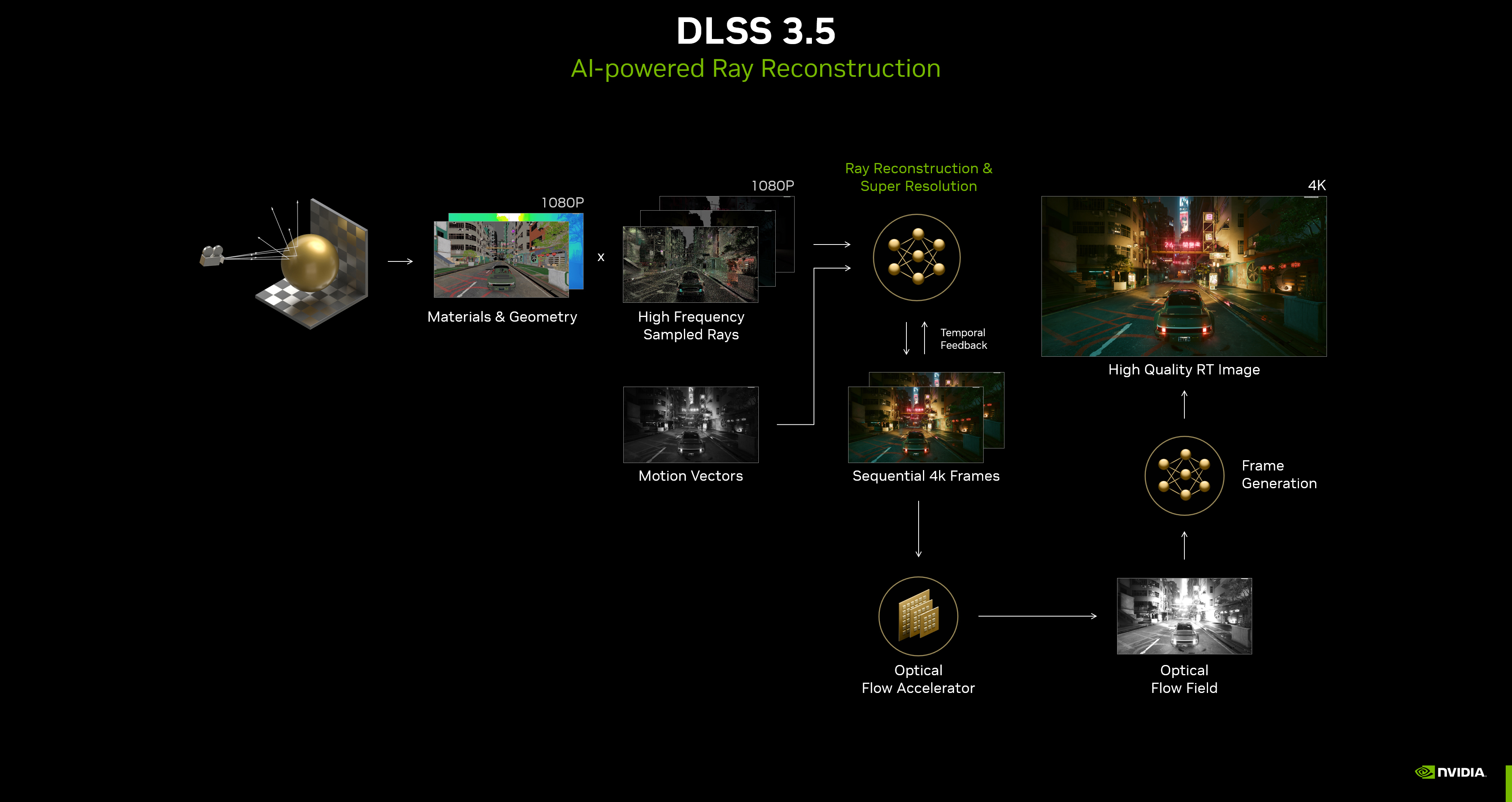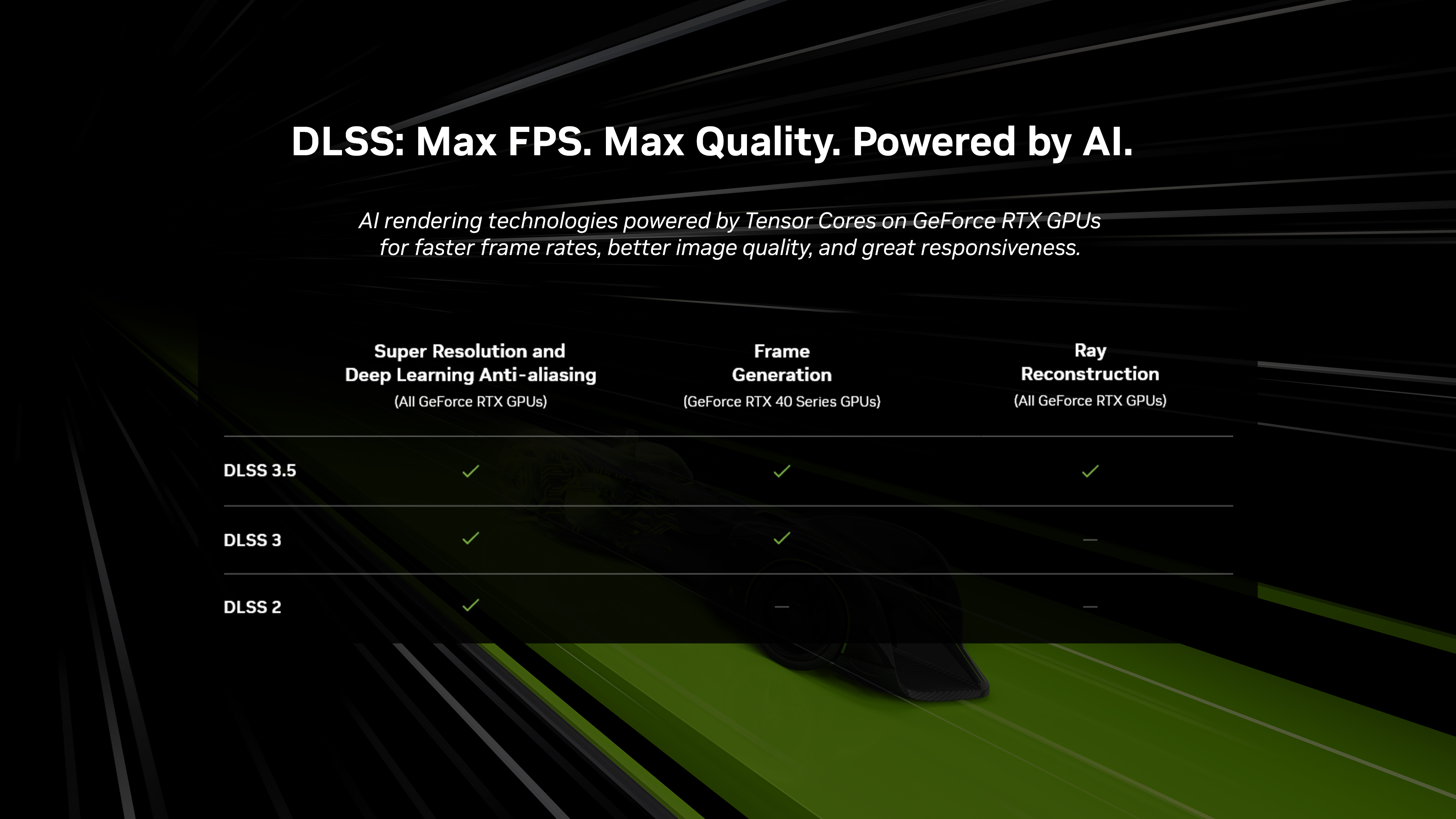NVIDIA DLSS & GeForce RTX: List Of All Games, Engines And Applications Featuring GeForce RTX-Powered Technology And Features
NVIDIA DLSS, Ray Tracing, and GeForce RTX-accelerated AI technologies and features have been adopted by developers with unprecedented speed, faster than any other in NVIDIA’s history. Over 470 games and applications feature RTX support, including the best selling games, most-popular apps, and most used game engines.
NVIDIA DLSS (Deep Learning Super Sampling) is our award-winning AI rendering technology that increases graphics performance in over 340 games and apps using dedicated Tensor Core AI processors on GeForce RTX GPUs. In supported titles, listed below, all GeForce RTX users can enhance their experience with DLSS 2 - a.k.a. Super Resolution - which taps into the power of a deep learning neural network to boost frame rates and generate beautiful, sharp images.
Owners of GeForce RTX 40 Series graphics cards and laptops can multiply frame rates using NVIDIA DLSS 3. There are over 40 released DLSS 3 games, and in each title performance can be further accelerated by DLSS Frame Generation, making DLSS 3 a game-changing neural graphics innovation that’s being rapidly adopted by developers everywhere.
And now there’s NVIDIA DLSS 3.5 and its new Ray Reconstruction technology. When activated, Ray Reconstruction replaces hand-tuned ray tracing denoisers with a new unified AI model that enhances ray tracing in supported games, elevating image quality to new heights. Learn all about this exciting new feature here.
If you own a GeForce RTX 20 or 30 Series graphics card or laptop, you can use Super Resolution and Ray Reconstruction in supported DLSS games. GeForce RTX 40 Series gamers can also activate Frame Generation, further accelerating performance. Additionally, integrations of DLSS 3 Frame Generation also include NVIDIA Reflex, reducing system latency for all GeForce RTX users, making games more responsive.
GeForce RTX gamers also benefit from class-leading RTX-accelerated Ray Tracing, which brings realistic and immersive visual effects to games. In apps, acceleration from dedicated Ray Tracing Cores dramatically speeds up renders, enabling artists to not only create final renders more quickly but also enabling interactive ray tracing in the viewport which makes iterating on and refining new ideas simpler and easier.
And AI technologies and features, powered by the Tensor Cores found on GeForce RTX GPUs, unlock revolutionary creative workflows which make tedious tasks a thing of the past. Advanced capabilities such as rotoscoping, retiming, super resolution and more are now more accessible to even hobbyist creators. Follow the links to check out examples of how AI helps creators and industries.
Which Games, Engines and Applications Support RTX Technologies?
More and more add support each and every month. Check out the full list below, last updated August 20th, 2024.
How Do I Use Ray Tracing and NVIDIA DLSS In Games?
It’s easy! Install the latest GeForce Game Ready Driver from GeForce Experience or our website, download the latest version of the game you want to play, load in, open the options menu, and enable ray tracing and NVIDIA DLSS.
For NVIDIA DLSS, we recommend its Quality Mode for 1920x1080 and 2560x1440, Performance Mode for 3840x2160, and Ultra Performance Mode for 7680x4320. To enable DLSS 3, activate “Frame Generation” in the applicable games’ options. And for DLSS 3.5, activate “Ray Reconstruction”.
To learn which games have added NVIDIA DLSS, check this article each month, and stay tuned to GeForce.com, where we announce new, upcoming integrations.
How Do I Use RTX Technologies In Apps and Engines?
You’ll need the latest GeForce Game Ready Driver or NVIDIA Studio Driver for your GeForce RTX graphics card, GPU or laptop, but as every application is different we can’t provide specific instructions for each. Instead, we recommend checking out the app’s official website and help guides.

